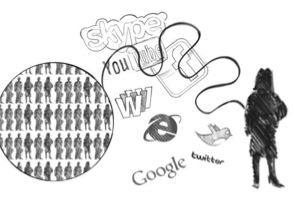Support network of experts
Designed into these learning stories:
Narrative
Students are asked to devise and complete a project that involves resources from different subjects in the curriculum and requires they involve external experts. Guidelines and an assessment checklist that fulfil curriculum requirements have been agreed by teachers and students.
In Juan’s school they have agreed projects should explore how different countries tackle environmental issues. One of the guidelines created is that groups must involve external experts from the local region, a national organisation and an international level. Another is that it must include language learning as part of its activity. They agree that they will work in small groups of two and three to decide the topic and focus of their project.
Juan arranges to work with Maria-Elena and Pablo and they choose to investigate and analyse different recycling practices in countries across Europe. They agree to specifically compare practices in countries that speak languages they have been learning at school. Finally, their project will also make recommendations on recycling improvements for their own locality and country, and the project outputs and recommendations will be reported back to the other groups, as well as the local expert they work with. They present their plan to Ms Galinis, their teacher, who suggests that they create a webpage or blog so that their outputs and recommendations can be easily accessed.
Ms Galinis then works to connect the student groups with experts they need to complete their projects. She uses her teacher networks within the school and local education body (through online social networking sites and the virtual learning environment) to identify and contact specialists from near and far who offer the information and resources the students need. Each group also researches experts in their fields to find others they should speak to. With the help of Ms Galinis, Juan and his friends contact the recycling coordinator for the local region, a civil servant in the government who works on environmental issues, and a professor at a university conducting international research in the area. Ms Galinis also uses these online networks to get support from other teachers and ICT coordinators on how to use synchronous communication effectively in projects (e.g., through online forums or by email).
Using instant messaging and videoconferencing tools in the school library, the group interview their ‘experts’ over the course of a week, both in class and in their own free time in school. The experts also share documents and resources with the group through email and document-sharing web sites. In addition to the environmental experts, the groups communicates by IM or video with language teachers who have been found by Ms Galinis to follow up any questions they have around confusing information in the different languages.
Once the research and interviews have been completed, the group analyses the information and creates a report on a web page of their findings, including recommendations on local and national improvements. They can choose to present their information through different multi-media formats and using multi-touch tools like the interactive whiteboard. Their project is assessed using the original project guidelines and from feedback from their teacher, peers and the experts they share the information with.
This post is also available in: Turkish









